亚马逊雨林,厄瓜多尔 Amazon rainforest, Ecuador (© Mark Fox/Getty Images)
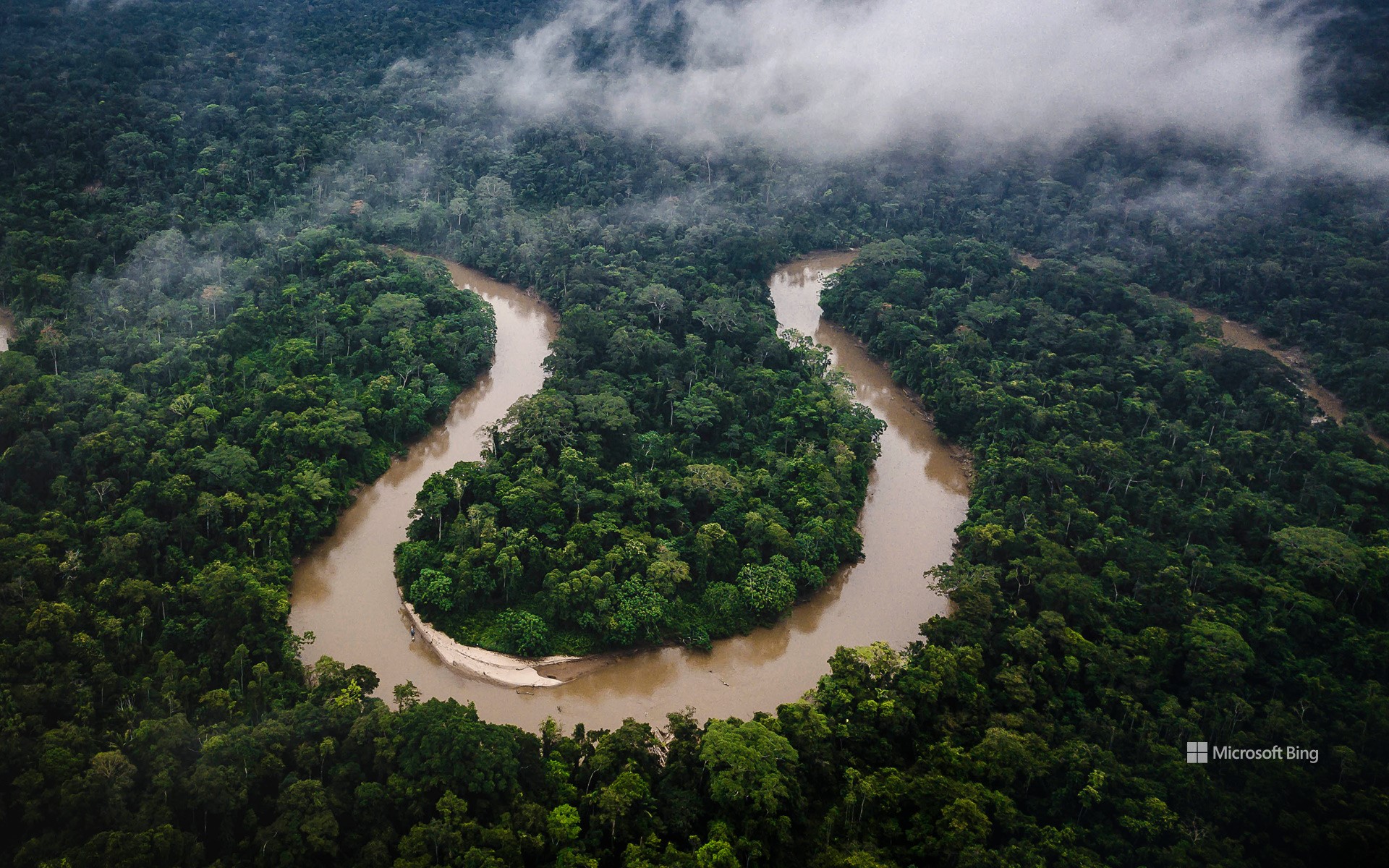
亚马逊雨林,厄瓜多尔 Amazon rainforest, Ecuador (© Mark Fox/Getty Images)
一路丛林 Jungle all the way
世界雨林日
“世界雨林日”不仅是日历上的一个纪念日,更是一项行动号召。该节日由非营利环保组织“雨林伙伴关系”于2017年设立,旨在提升公众对雨林重要性的认识,并推动全球范围内的保护工作。在美国,人们通过社区植树、学校项目以及社交媒体活动参与纪念,宣传雨林保护的成功案例。许多植物园会举办特别展览,而环保组织则发起筹款挑战,以支持实地保护项目。
厄瓜多尔的亚马逊雨林是这片生态系统中最引人注目的区域之一。虽然面积不及巴西境内的雨林广阔,但它被认为是地球上生物多样性最密集的地区之一。这里栖息着丰富多样的生物种群,包括美洲虎、金刚鹦鹉、黑凯门鳄、电鳗以及众多尚未被科学命名的药用植物种类。这片雨林也是多个原住民群体的传统居住地,其中包括一些尚未与外界建立联系的部落,其领地依法受到保护。然而,这些社区的生活方式正面临日益严峻的威胁,尤其来自石油开采等工业活动的影响。“世界雨林日”提醒我们:保护雨林并非遥不可及的目标。通过个人选择与集体行动,从减少纸张使用到支持可持续产品,公众的努力可以在厄瓜多尔的亚马逊雨林,乃至更广阔的热带雨林地区,产生实质影响。
World Rainforest Day
World Rainforest Day is not just a calendar event—it's a call to action. Established in 2017 by Rainforest Partnership—a nonprofit environmental organization—the day raises awareness about the importance of rainforests and mobilizes efforts to protect them. In the US, the occasion is marked with community tree plantings, school projects, and social media campaigns that highlight conservation successes. Many botanical gardens host special exhibits, while environmental groups run fundraising challenges to support on-the-ground protection efforts.
One notable region of the Amazon rainforest is in Ecuador. Although smaller than Brazil's share, it's considered one of the most biologically dense areas on Earth. It also shelters an extraordinary range of life—jaguars, macaws, black caimans, electric eels, and medicinal plants, many still unknown to science. This part of the rainforest is home to Indigenous groups, including uncontacted tribes whose territories are legally protected. But their way of life is increasingly threatened by industrial activities, especially oil drilling. World Rainforest Day reminds us that the protection of rainforests is possible through personal choices and collective action. From reducing paper use to supporting rainforest-friendly products, people can make tangible impacts that reach Ecuador's Amazon and beyond.
亚苏尼国家公园,厄瓜多尔 Yasuní National Park in Amazonian Ecuador (© Paul Bertner/Minden Pictures)
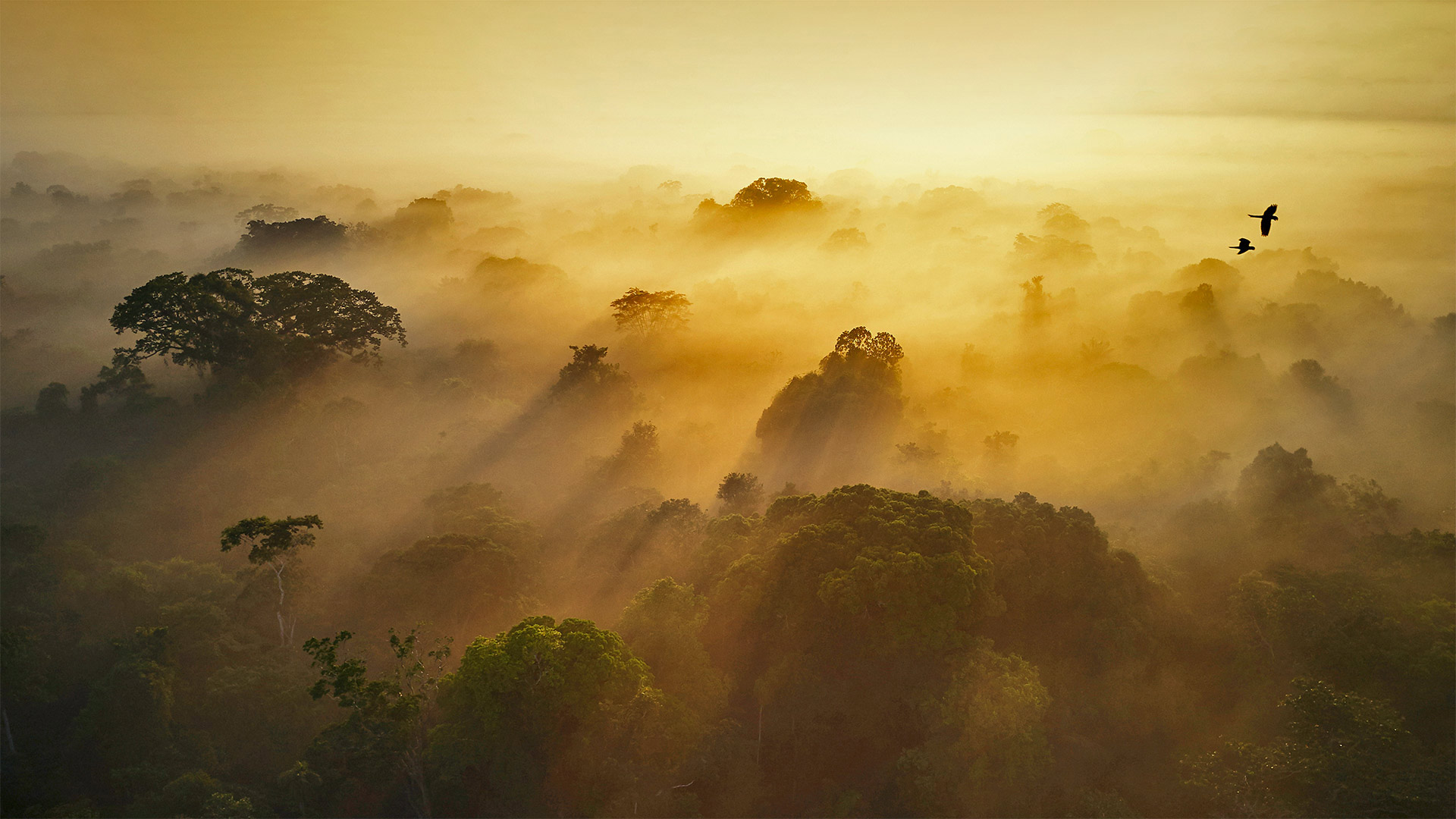
亚苏尼国家公园,厄瓜多尔 Yasuní National Park in Amazonian Ecuador (© Paul Bertner/Minden Pictures)
地球之肺 The lungs of Earth
World Rainforest Day
Perhaps no other place on Earth plays a more crucial role in sustaining life as we know it than the Amazon rainforest, the largest in the world. The Amazon spans nine countries in South America including Ecuador, where this pristine ecoregion is protected by the Yasuní National Park, shown here. Today is set aside as World Rainforest Day, to remember the vital role of this and other rainforests and to champion efforts to protect them. The world's rainforests are under threat like never before from deforestation driven by agriculture and cattle ranching. Some studies have indicated humans have degraded or destroyed more than half of the world's rainforests. Fewer trees mean warmer temperatures, which increases the risk of drought and wildfire and compounds the damage of deforestation.
The Amazon has been called the lungs of the planet because the estimated 390 billion trees here convert much of the oxygen humans and other animals need to survive. The Amazon also cools our planet by capturing and storing carbon. It is as much the planet's air conditioner as it is its lungs. For that reason, the health of rainforests is crucial to arresting climate change.
The other gift of rainforests, and of the Amazon in particular, is biodiversity. The number of species of plants, animals, and insects in the Amazon is not in the thousands, but in the millions. Scientists estimate half of the planet's biodiversity exists in the Amazon. In fact, many of our modern pharmaceuticals are derived from Amazon plants. That makes the Amazon not just the Earth's lungs and air conditioning, but also its medicine cabinet.
世界雨林日
也许地球上没有其他地方比世界上最大的亚马逊雨林在维持生命方面发挥着更重要的作用。亚马逊河横跨包括厄瓜多尔在内的南美洲九个国家,这里的亚苏尼国家公园保护着这个原始的生态区。今天被定为世界雨林日,以纪念这片和其他雨林的重要作用,并支持保护它们的努力。由于农业和畜牧业造成的森林砍伐,世界雨林受到前所未有的威胁。一些研究表明,人类已经退化或破坏了世界上一半以上的雨林。树木减少意味着气温升高,这增加了干旱和野火的风险,并加剧了毁林的破坏。
亚马逊河被称为地球的肺,因为这里估计有3900亿棵树转化了人类和其他动物生存所需的大部分氧气。亚马逊还通过捕获和储存碳来冷却我们的地球。它既是地球的空调,也是地球的肺。因此,雨林的健康对于遏制气候变化至关重要。
热带雨林,尤其是亚马逊的另一个礼物是生物多样性。亚马逊河流域的植物、动物和昆虫种类不是数千种,而是数百万种。科学家估计,地球上一半的生物多样性存在于亚马逊地区。事实上,我们的许多现代药物都来自亚马逊植物。这使得亚马逊不仅是地球的肺和空调,而且还是它的药柜。
达尔文岛的达尔文拱门,厄瓜多尔加拉帕戈斯 Darwin's Arch with Darwin Island in background, Galápagos, Ecuador (© miralex/Getty Images)
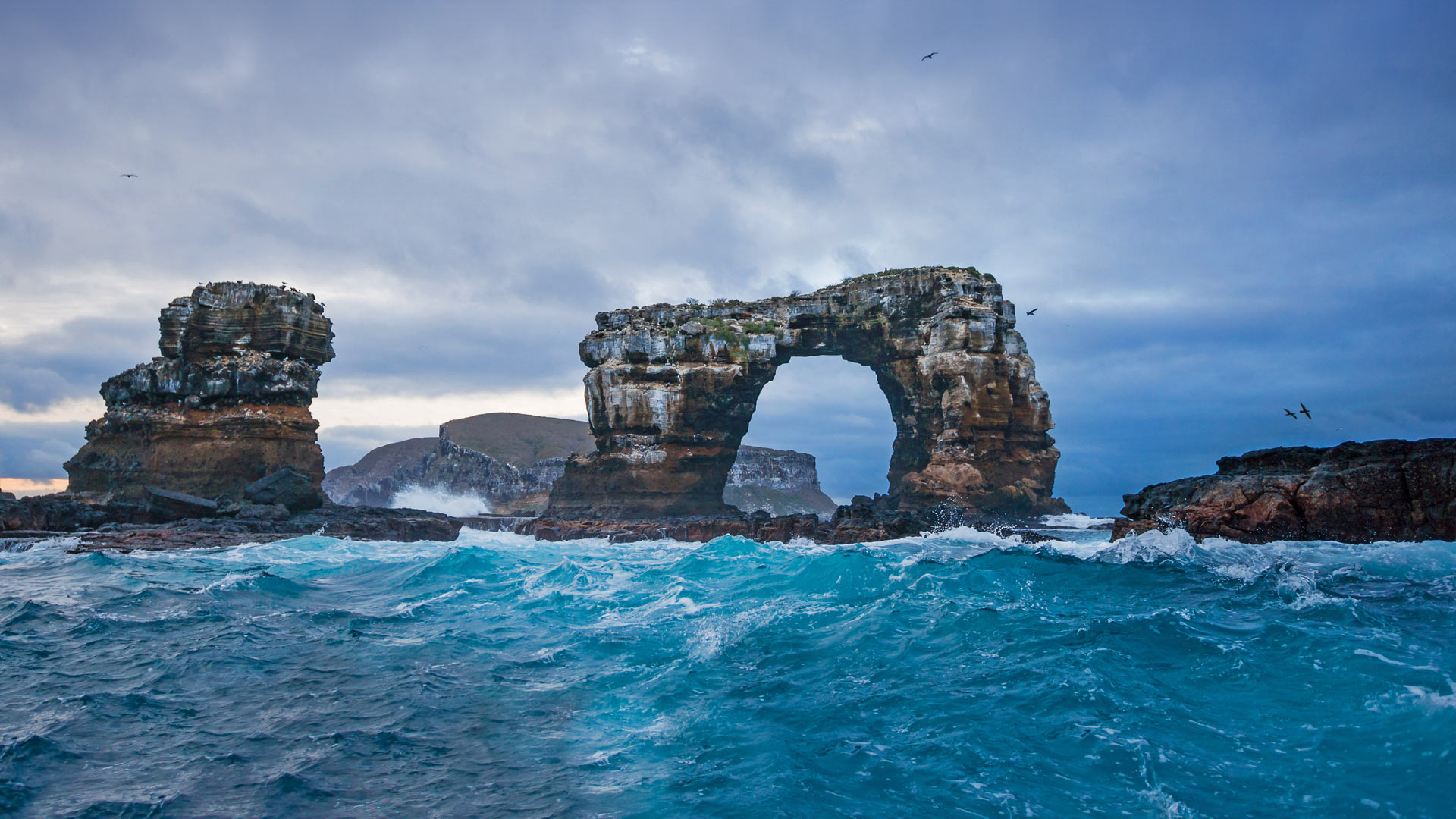
达尔文岛的达尔文拱门,厄瓜多尔加拉帕戈斯 Darwin's Arch with Darwin Island in background, Galápagos, Ecuador (© miralex/Getty Images)
著名海拱门的末日 Last days of a famous sea arch
Darwin's Arch
On Darwin Day, we visit Darwin's Arch, named for the famous English naturalist Charles Darwin who was born on this day in 1809. The last time the arch looked as it does in this image was May 17, 2021. That's when this sea arch collapsed due to natural erosion and became a pile of rubble between what is now two pillars. Some locals and scientists have renamed the rock formation the 'Pillars of Evolution,' a nod to Darwin's theory of evolution by natural selection.
Sea arches are found all over the world, often where cliffs meet the sea. They're formed as waves erode the underside of a rock, leaving the top. Darwin's Arch is located southeast of Darwin Island, part of the Galápagos Archipelago in the Pacific Ocean.
达尔文拱门
在达尔文日,我们参观达尔文拱门,以1809年出生于这一天的著名英国博物学家查尔斯·达尔文命名。最后一次拱形看上去像是在2021年5月17日。就在那个时候,这座海拱由于自然侵蚀而倒塌,变成了现在两根柱子之间的一堆瓦砾。一些当地人和科学家已将岩层更名为“进化的支柱”,这是对达尔文自然选择进化理论的认可。
海拱遍布世界各地,通常是悬崖与大海交汇的地方。它们是波浪侵蚀岩石底部,留下顶部时形成的。达尔文拱门位于达尔文岛东南部,达尔文岛是太平洋加拉帕戈斯群岛的一部分。
暮色中的面包山和老城区,厄瓜多尔基多 Old Town and El Panecillo Hill in Quito, Ecuador (© Karol Kozlowski/plainpicture)
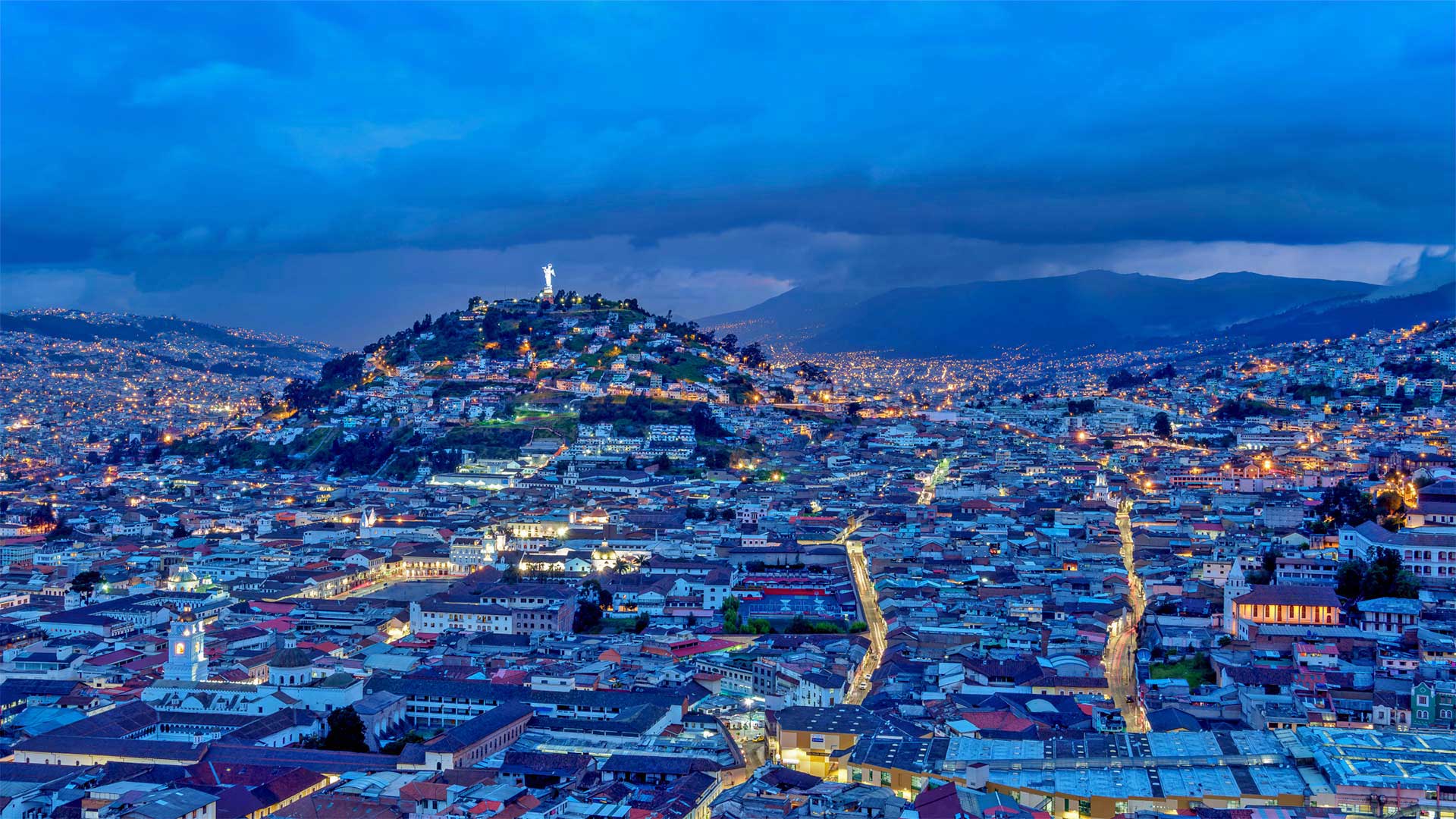
暮色中的面包山和老城区,厄瓜多尔基多 Old Town and El Panecillo Hill in Quito, Ecuador (© Karol Kozlowski/plainpicture)
Old Town Quito
If Ecuador's capital city Quito wasn't high up enough for you at 9,350 feet above sea level, you can elevate your experience even further with a journey up El Panecillo. Translated to English, 'El Panecillo' means 'The Dinner Roll'. Rising 600 feet above the old city center in the foreground, this rotund volcanic hill offers perhaps the best possible panorama Quito. Though our viewpoint here, looking south through Quito's vast valley, makes for a nice twilight shot, too.
基多老城
如果厄瓜多尔首都基多在海拔9350英尺的地方还不够高,那么你可以到埃尔帕内切洛去旅行,进一步提升你的体验。翻译成英语,“El Panecillo”的意思是“晚餐卷”。这座圆形的火山山在前景中高出老市中心600英尺,可能是基多最好的全景。虽然我们在这里的观点是,透过基多广袤的山谷向南看,也是一个不错的黄昏拍摄。
巴尼奥斯附近的阿格杨瀑布,厄瓜多尔 Agoyán waterfall near Baños de Agua Santa, Ecuador (© Laura BC/Getty Images)
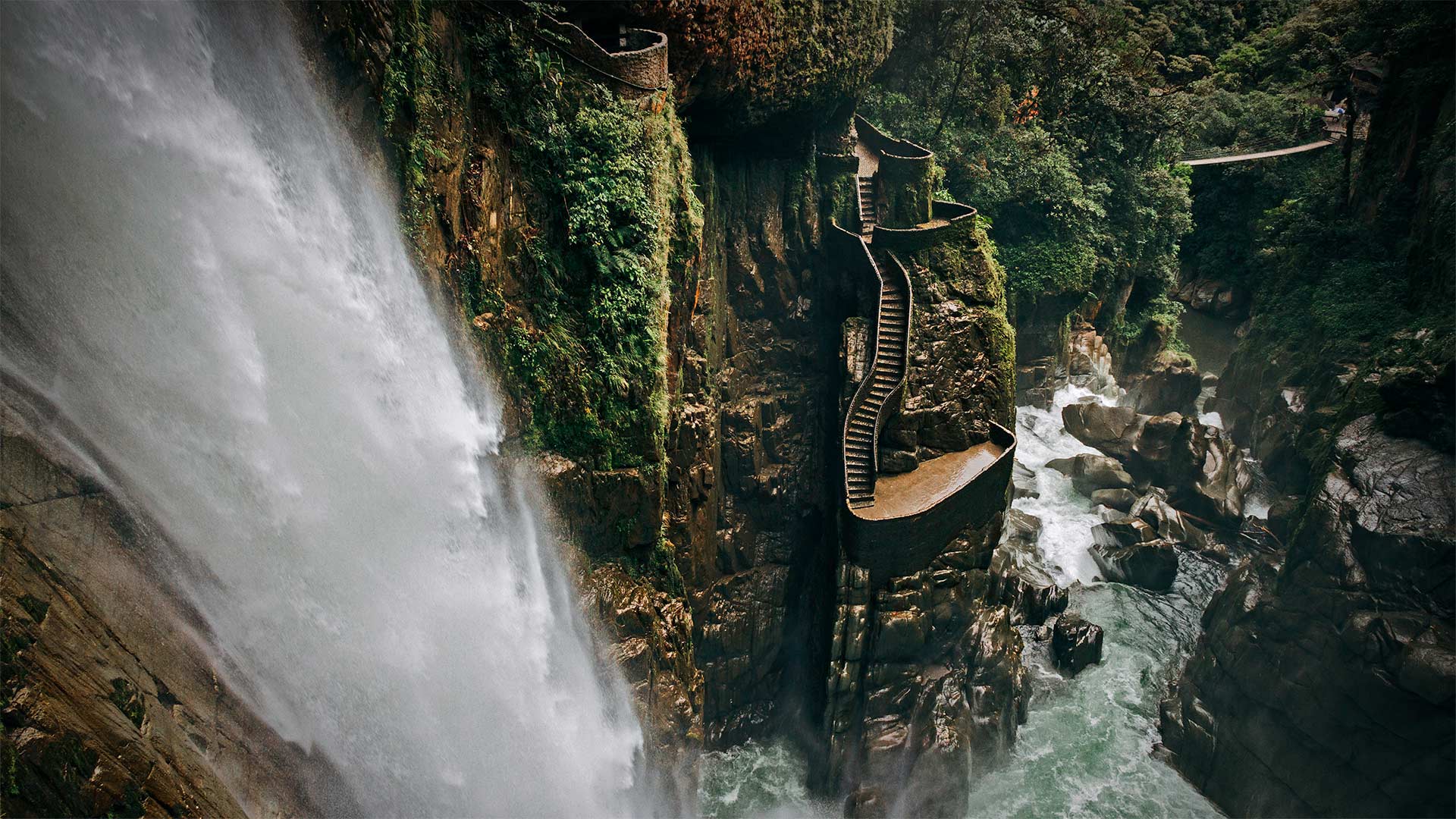
巴尼奥斯附近的阿格杨瀑布,厄瓜多尔 Agoyán waterfall near Baños de Agua Santa, Ecuador (© Laura BC/Getty Images)
On the Route of the Waterfalls
Coursing down the steep slopes of the Andes, just as the mountains meet the Amazon jungle, the Pastaza River is forced through a narrow channel, which concentrates its power like a firehose. The roiling torrent then shoots over the edge of this mountainside, plunging 200 feet into a cauldron-shaped pool. Agoyán, better known as El Pailón del Diablo (The Devil's Cauldron) is Ecuador's tallest and most famous waterfall. It's a highlight of the Ruta de las Cascadas (Route of the Waterfalls), a popular circuit of the many waterfalls and hot springs near the mountain town of Baños de Agua Santa.
Baños, as it's better known, is in the shadow of Tungurahua, one of South America's most active volcanoes. The once-sleepy town has become a gateway to the Amazon for outdoor adventurers who love to hike, zipline, rock climb, or bike down the mountain to this roaring cascade in the verdant jungle. Pro tip: Bring a rain jacket. The best way to experience the awesome power of The Devil's Cauldron is to walk onto a swaying suspension bridge and then follow the steep steps down the mountainside, around and behind the roaring curtain of water, literally soaking in the view.
与瀑布同行
帕萨扎河沿着安第斯山脉的陡坡蜿蜒而下,就在山脉与亚马逊丛林交汇之际,它被迫穿过一条狭窄的河道,像消防水龙带一样集中了它的力量。翻滚的激流随后从山腰边缘喷涌而出,注入200英尺深的一个大锅状的水池。阿戈安,俗称暗黑破坏神(魔鬼大锅),是厄瓜多尔最高、最著名的瀑布。它是瀑布之路(Ruta de las Cascadas)的一大亮点,瀑布之路是巴尼奥斯德阿古亚圣塔(Baños de Agua Santa)山镇附近众多瀑布和温泉的热门线路。
众所周知,巴尼奥斯位于通古拉瓦火山的阴影下,通古拉瓦火山是南美洲最活跃的火山之一。这个曾经沉睡的小镇已经成为户外冒险家通往亚马逊河的门户,他们喜欢徒步旅行、拉拉链、攀岩或骑自行车下山,来到这片葱茏丛林中咆哮的瀑布。职业小贴士:带件防雨夹克。体验魔鬼大锅令人敬畏的力量的最佳方式是,走上一座摇曳的吊桥,然后沿着陡峭的台阶下山,绕过咆哮的水幕,躲在水幕后面,尽情地沉浸在视野中。
国家誓言圣殿上怪诞的厄瓜多尔本土海鸟,厄瓜多尔基多 Grotesques of native Ecuadorian seabirds on the Basílica del Voto Nacional in Quito, Ecuador (© Henri Leduc/Getty Images)
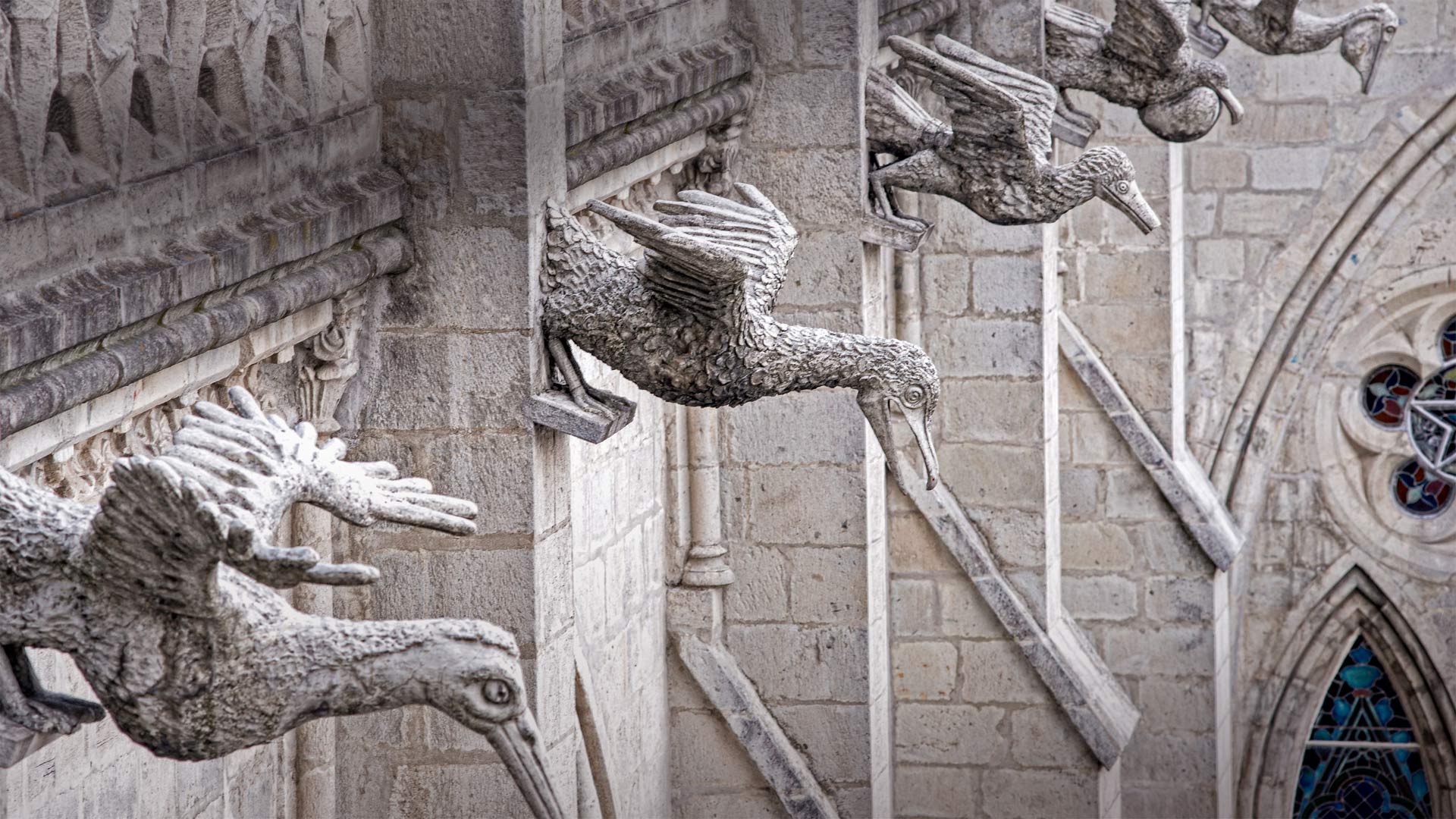
国家誓言圣殿上怪诞的厄瓜多尔本土海鸟,厄瓜多尔基多 Grotesques of native Ecuadorian seabirds on the Basílica del Voto Nacional in Quito, Ecuador (© Henri Leduc/Getty Images)
A 'grotesque' scene
'Goofy' might be a better descriptor, but these seabird statues lining an outer wall of an Ecuadoran cathedral are called 'grotesques'—the architectural term for a statue ornamenting the side of a building. But hang on…don't we call those 'gargoyles'? Not exactly. Gargoyles are a type of grotesque that boast a specific, practical feature: spouts that convey water from rain gutters away from the building.
Grotesques often live up to their off-putting name, depicting demons or monsters (the word 'gargoyle' comes from 'garguille,' an evil creature from French legend). But the Basílica del Voto Nacional's grotesques celebrate the beautiful fauna of Ecuador: not only seabirds but iguanas, crocodiles, armadillos, and more. Though the Basílica is one of Quito's premier tourist attractions, it's been under construction since 1892 and technically remains unfinished—but legend has it the world will end when it's complete, so no one's really been rushing the job.
费尔南迪纳岛海岸的加拉帕戈斯海狮,厄瓜多尔科隆群岛 Galápagos sea lion off the shore of Fernandina Island, Galápagos Islands, Ecuador (© Tui De Roy/Minden Pictures)
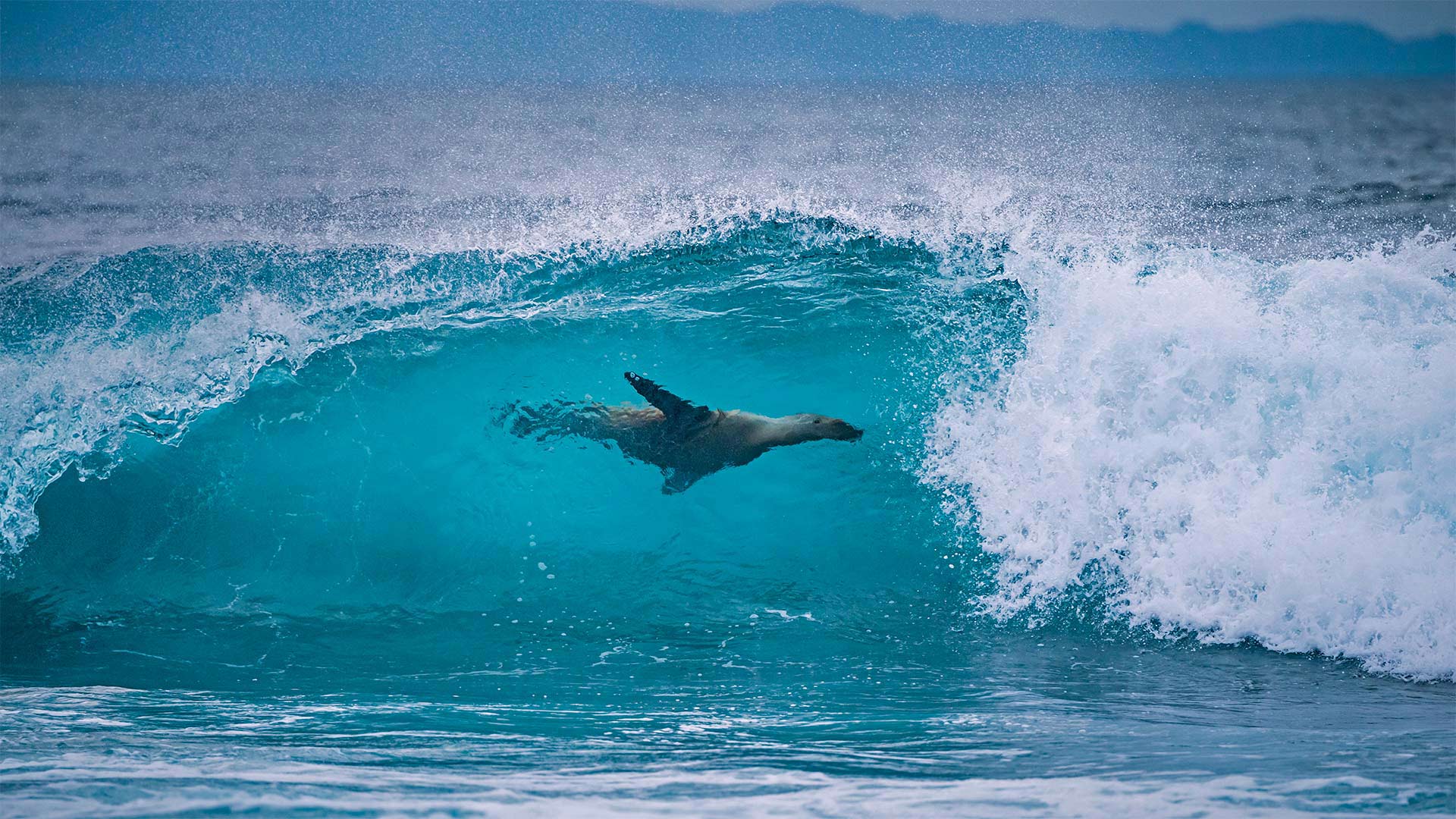
费尔南迪纳岛海岸的加拉帕戈斯海狮,厄瓜多尔科隆群岛 Galápagos sea lion off the shore of Fernandina Island, Galápagos Islands, Ecuador (© Tui De Roy/Minden Pictures)
A day for the oceans
The Galápagos sea lion is found in two places in the world—its namesake locale and the Isla de la Plata just off the coast of Ecuador. They're often spotted playing and surfing in the waves. They're gregarious on land, too, sometimes even grabbing a snooze on a town bench. Although a common and beloved sight in the islands, Galápagos sea lions are endangered, and their numbers are susceptible to changes in ocean temperatures, which that can limit their food supply.
Enter World Oceans Day. Celebrated annually on June 8 and recognized by the UN, the holiday aims to focus global attention on the health of our oceans. This year's theme calls for world leaders to commit to protecting 30% of the seas and 30% of the land by 2030 to help ensure species diversity, like our friendly Galápagos sea lion, and safeguard life as we know it. #BigGoals